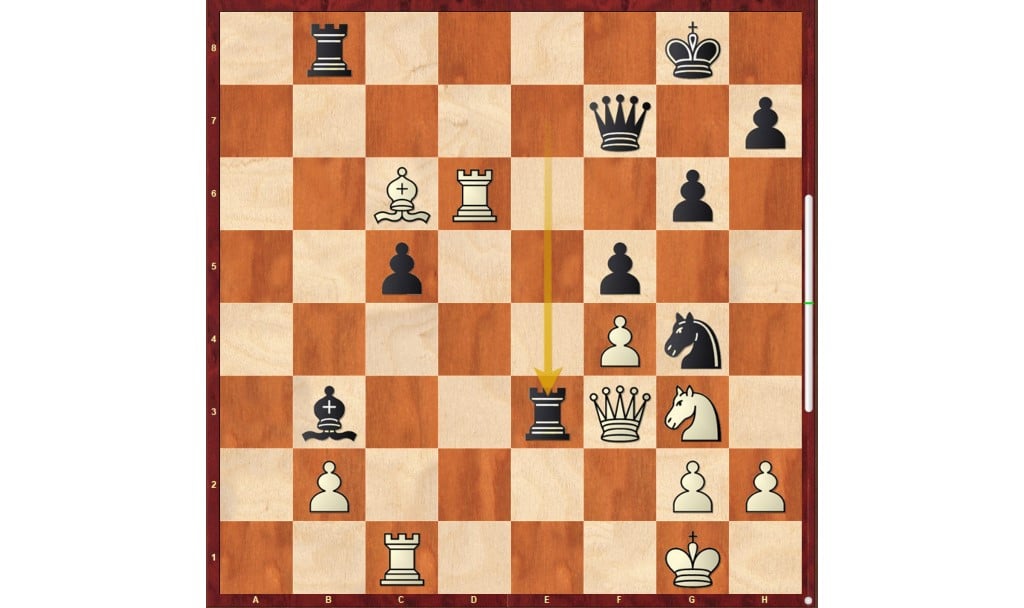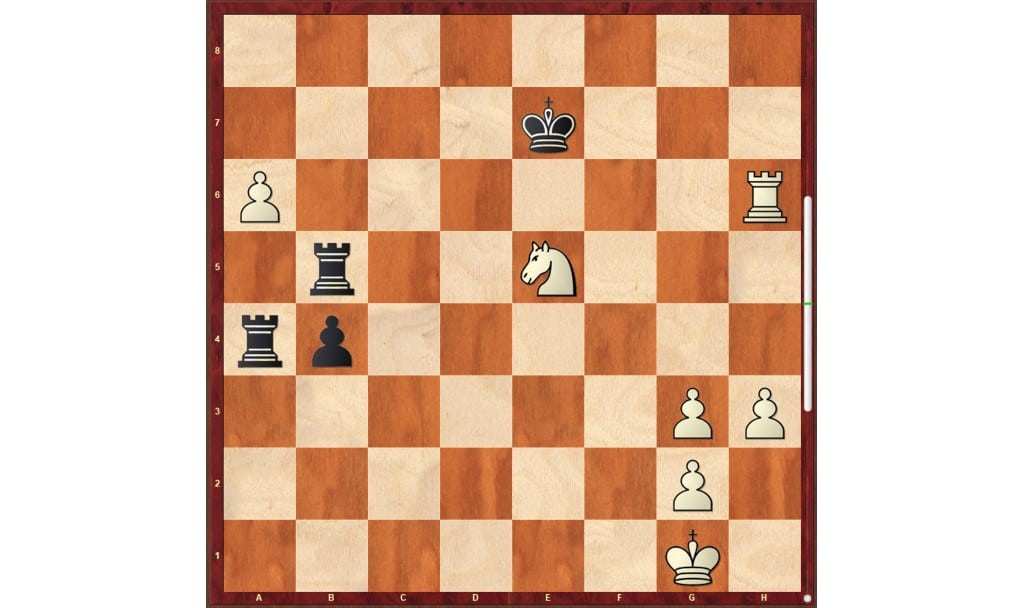Many people invest a lot of time and energy into their chess training. Even though the input seems to be similar, the output varies greatly. That is why you need to find an effective way to train your chess skills. And I’ll show you my favorite method in this article.
What you can control is what exactly you spend your time and energy on.
I hope you read my article on how to set up a training plan. If not so, please do it now. After you allocate the time, you are ready to know what exactly to do with this time. The most frequent question I get is: “What is the most effective chess training”? As we are all on our separate paths, it is hard to give a general answer. But there is an easy method to find out what training would be the most effective for yourself.
And that is really the question you should ask. There is no universally effective chess training, but the most effective chess training for you!
I was really amazed to only learn about that method when I was a GM already. Most people maybe do something similar, but not exactly that.
The method is free and very easy to implement.
Beware Of Get Rich Quick Scumbags
But before getting there, let me digress for a moment. There is one more thing I want to get off my chest before I dive into the method. While doing my research for this article I got really mad. Searching for some advice on the most effective chess training, I nearly only got articles wanting to sell you something. They go like this:
‘Improving in chess can be really tough, but we found the fastest way to make your results explode immediately’. Then they will present you with some obscure theory of what you should do. This varies from learning new openings to doing puzzles or learning endgames. And then they follow up with a very generous offer:
‘Buy now for only 50$ and you will instantly boost your rating by 100 points and additionally find your dream wife in the next 5 days’.
Please do me a favor and do not give them any money. Improving in chess is tough and takes a lot of effort. There is also no general rule as to what you have to do to become an XXXX-rated player. Certainly, there are some patterns, but no one-size-fits-all scheme…
The Method
Now I feel a lot better and ready to guide you through 3 easy steps. Let’s do it.
1) Guess Your Biggest Weakness
Write down your biggest weakness chess-wise. This will serve as a comparison to the real picture later on.So, what is your biggest weakness? Choose one. We will start with the following categories. The more experienced you get, the more into details you can go:
- Opening Theory
- Tactics/Calculation
- Strategical play
- Endgame
You picked one? Wrote it down? Ok, we can go on:
2) Analyse Your Losses
In order to know what is the most effective training for you at this specific point, you will have to find out why you lose games.
Why?
Because if you stop making the mistakes that lead to your losses, you will automatically improve!
This is going to be a bit painful, but worth it. Prepare at least your last 10 Losses and go over them with an Engine. The bigger the number, the more trustable the result. Please don’t take Bullet games, there is not much to improve in this lottery.
Now here is what you have to do:
Find your LAST mistake in each game that led to the loss. Put that mistake in one of the 4 above categories and make a sign there.
If you are already a Bishop down and then blunder your Queen, the Queen blunder does not count. Find out why you lost the Bishop. The same goes for being worse out of the opening, then outplaying your opponent and having a winning position only to then blunder. The opening was NOT your last mistake that leads to the defeat.
Here is my most recent classical loss as an example:

In this position playing white, I did see the possibility of Bd5, but after some calculation decided against it and played Qf1? It is very bad because Qe7! wins immediately. The rook is hanging and Qh4 is coming, there is no way to protect h2 without losing the knight on g3.
As the position would be roughly equal after Bd5, this one definitely goes into the category of Tactics/Calculation. Note that I ould have lost some moves before but managed to fight back. Only sign the mistake that really leads to the loss of the game!
Next one:

This game is one of my most instructive losses recently. It is already featured in the article on fear-based thinking.
I should have won a long time ago but ended up here. I will not confuse you with details, but 41.Nc6+ Kd7 42.a7 Kc7 43.Rh8! makes a draw. I played 41.Nd3? instead and missed that after b3 42.Rh7+ Kf6 43.Rb7 black has Raa5! and wins!
You see the pattern already, once more tactics/calculation.
3) Find Your Biggest Weakness and Start Working On It
After having finished the analysis of your recent losses, you will have some data. For me on a basis of 10 losses it would be:
- Opening Theory: 0
- Tactics/Calculation: 7
- Strategical play: 2
- Endgame: 1
Let me make an assumption: A considerable amount of you considered Opening Theory to be your biggest weakness before watching your games. Most of you will have been proven wrong and should work on something else instead.
Your Most Effective Chess Training
Now that you have an idea where you lose your points, you should organize your training accordingly. In order not to neglect one part totally, I would recommend that you allocate 10% of your time to each category no matter what. The other 60% should be weighted with your results.
In my case this would mean:
- Opening Theory: 10% + 0/60% = 10%
- Tactics/Calculation: 10% + 7/60% = 52%
- Strategical play: 10% + 2/60% = 22%
- Endgame: 10% + 1/60% = 16%
This can be a very good guideline for my further training. After a certain period, one should repeat the process and see if the mistakes shifted. Then obviously the focus areas should also shift.
The stronger you get, the higher the automatic percentage of the opening will be. But if you are not a titled player yet, be absolutely sure to spend LESS than 50% of your time on openings no matter what.
Additional Remarks
I tried to keep this as simple as possible. This is only the starting point of that method. Over time you can get more sophisticated. If you only take away one thing then it is to really control which area costs you the most points.
Mostly your feeling will be off here! The one time you get trapped in the opening feels much stronger than the several times you get slowly outplayed strategically. Don’t fall for the tricks your brain plays on you! Now it is your turn to turn this theory into practical training. If you want to know how I analyze my own games in detail, then this blog post is for you: how to analyze your own games.
And if you want some help on your journey to chess mastery, I can recommend from the bottom of my heart the Chess Plattform ChessMood. (This is an Affiliate Link. I only recommend things I truly love and enjoy using myself). You can access a variety of courses, from opening to the middle game and endgame. And if you decide to become a PRO-Member, you will even get a 1-1 introduction call with a GM in order to organize your chess training.